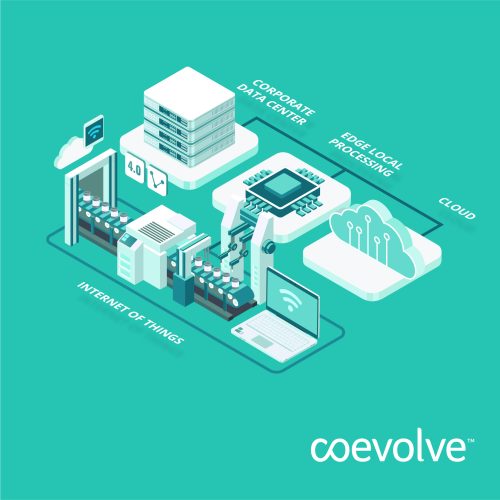The Role of Edge Computing in Improving Network Performance and Business Decisions
There is no doubt that advancements in data analytics, artificial intelligence, and machine learning hold the key to building an agile and resilient enterprise, but the role of next-generation networks in helping businesses gain a competitive advantage will be even more important.
As an organization grows, so does its technology stack. The increasing global adoption of IoT devices illustrates this, with Statista projecting that the number of such devices will nearly double from 15.1 billion in 2020 to over 29 billion in 2030 [1].
With time, inevitably the web of devices, servers, and applications spread over multiple locations and geographies become slower and clunkier, leading to data loss and downtime from outages and increased cybersecurity risks. This is why more and more IT leaders are looking to optimize network performance with edge computing.
IBM defines edge computing as a distributed computing framework that brings enterprise applications closer to data sources, such as IoT devices or local edge servers, to deliver faster insights through improved response times and better bandwidth availability [2].
While edge computing solutions will vary from business to business depending on the use cases and desired outcomes, there are three reasons why ultra-reliable, near-zero latency networks enabled by edge computing are set to play a crucial role in the success of the modern enterprise.

Why is edge computing important for businesses today?
Edge computing offers myriad benefits for high-growth enterprises, and its adoption is only set to grow over time. A recent edge computing report by IBM has estimated that 75% of enterprise data will be processed at the edge by 2025, compared to only 10% today [3].
Below we explore three key reasons for IT leaders to leverage edge computing in their network optimization efforts.
Cloud cost-savings through bandwidth optimization
Businesses are supporting more data-intensive applications than ever before and their reliance on data centers has never been greater. However, transporting exabytes of raw data to centralized cloud servers with speed and agility creates huge bandwidth requirements and isn’t cost-efficient.
With edge computing, bandwidth usage is optimized by storing, processing, and analyzing data sets closer to where it’s generated at ‘nodes’ to streamline the amount of data that’s transported onto centralized cloud servers.
By eliminating raw data transfers and only transporting relevant data, edge computing allows enterprises in data-intensive sectors such as finance, communications, and technology to save thousands of dollars in cloud costs.
Greater responsiveness and process agility with near-zero latency
Edge computing’s ability to improve the responsiveness of business-critical applications by reducing the ‘distance’ to a centralized data center is another compelling reason for organizations to deploy edge computing architecture. As edge computing can be a shot in the arm for real-time decision-making thanks to near-zero latency networks, especially when combined with 5G connectivity.
All businesses can benefit from real-time data, but the stakes are higher in industries such as healthcare, power distribution, autonomous vehicles, and those with strict latency requirements around predictive maintenance and safety, such as mass manufacturing and aviation.
More secure and reliable networks that power always-on systems
For organizations relying solely on a centralized cloud server, the fear of a data center outage is constant, because the entire network can be paralyzed. This can attract a range of direct and indirect costs including contractual penalties for not meeting service level agreements (SLAs) with customers or partners, costs incurred from data loss during outages, or loss of revenue based on concerned or dissatisfied customers.
Edge computing makes networks more resilient by decentralizing applications — if a part of the network fails, other nodes can continue to operate independently ensuring overall business continuity.
Additionally, edge security is more granular, allowing access management to be set at user or node levels. This means you can configure devices to hold only part of the data instead of whole data sets in a cloud server, making it much more challenging for cybercriminals to access.
How to leverage edge computing for better performance
Despite all its benefits, very few organizations are successfully using edge computing architecture today. This is because enabling seamless connectivity between distributed devices spread across locations requires intricate network configurations and robust communication protocols. But more importantly, the relative infancy of ‘edge’ compared to the cloud means that enterprises will need to do a lot of the legwork from scratch when choosing platforms, tooling, and assessing additional requirements.
Working with a trusted partner who understands your business and the complexities of edge computing can help your business succeed. Choosing a partner with wide-ranging network and security experience and the resources to support your needs — however complex they may be — can ensure a more successful deployment and seamless ongoing management.
Here at Coevolve, we understand next-generation networks and what edge computing can do for application delivery, process agility, and overall business performance. While leveraging edge computing can dramatically slash latency, it doesn’t mean you need to take apart your entire existing infrastructure to accommodate it. With our end-to-end management, our team will work alongside your internal IT team to assess, deploy, manage, and optimize a solution tailored to your business needs.